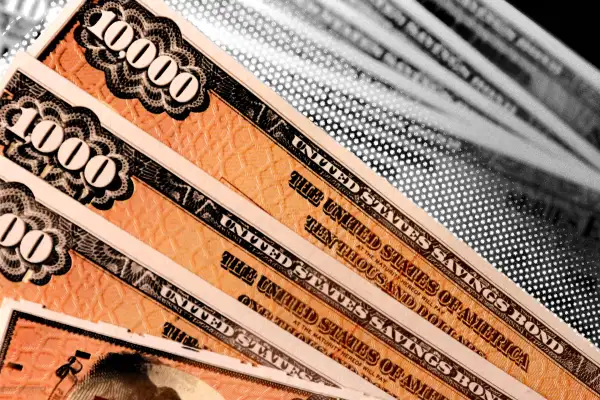The I Bond's New Rate Is Higher Than Expected. Here's How to Buy
Money is not a client of any investment adviser featured on this page. The information provided on this page is for educational purposes only and is not intended as investment advice. Money does not offer advisory services.

Even if you missed out on buying I bonds when their interest rate was at an all-time high, you can still snag them with a brand new rate that remains historically elevated.
The new annualized rate for Series I Savings Bonds, aka I bonds, is 6.89%, the Department of the Treasury announced Tuesday. The previous rate was 9.62% for I bonds purchased at any point between May and Oct. 28. For I bonds bought within the six months leading up to last May, the rate was 7.12%.
Buying I bonds between now and the end of April 2023 will lock in the new 6.89% rate for six months. This brand new rate is higher than the 6.48% that most experts predicted.
Inflation and I bonds rates
The reason why I bonds have boasted such attractive rates lately is because they are pegged to inflation, hence the “I” in I bonds. When setting new rates every six months, the Treasury Department factors in the latest inflation data. Scorching inflation in recent months pushed I bond rates to a record high of 9.62%, which just sunset Friday.
The bonds became so popular that buyers crashed the Treasury’s website hours before the deadline to lock in the 9.62% rate. A Treasury Department spokesperson told Money that it sold nearly $1 billion worth of I bonds on Friday alone, and almost $7 billion in the month of October.
While a notable dip from the record high, a 6.89% rate that is guaranteed for six months is nothing to balk at.
Additionally, I bonds purchased between now and the end of April 2023 come with an added perk that the previous round of I bonds did not: a fixed rate of 0.40%. While I bonds are better known for the six-month interest rate that is tied to inflation, the total (composite) rate for I bonds may also include a fixed rate that is set by the Treasury Department and does not change over the life of the bond. In other words, if you purchase an I bond now, it will lock in that 0.40% fixed rate until it matures in 30 years or until you cash it out, whichever is sooner.
When the I bond rate was 9.62%, that was entirely due to its inflation rate — aka the variable rate. At the time, the fixed rate was zero. The fixed rate has been zero since May 2020.
Prior to the pandemic and the ongoing bout of inflation, the last time the annualized rate for I bonds exceeded 6% was in 2005.
Financial experts often suggest viewing I bonds like an inflation-protected savings account. In that light, the current rate is much higher than those offered by typical certificate-of-deposit (CD) or high-yield savings accounts.
For reference, the national average rate for savings accounts is currently 0.21%, according to the FDIC. However, a handful of online banks offer annual percentage yields, or APYs, much higher than that. Ally Bank, for example, has been hiking its rates for savers and currently offers a 2.35% APY at press time. Capital One just announced a notable 3% APY on its online savings account as well.
Unlike savings accounts, the interest earned from I bonds is not taxable at a state or local level, and is only taxed federally when cashed out. If bonds are being put toward qualifying education expenses, it’s possible to get federal taxes waived altogether.
How to buy I bonds at 6.89%
Even though the interest rate has dipped, I bonds are a uniquely safe and relatively predictable investment. I bond proponents underscore that the bonds provide a nearly risk-free place to park your savings that’s shielded from the volatility of the stock market and rapidly rising consumer prices.
However, buying I bonds can be a headache. Only the Treasury Department issues the government bonds, and the core method of purchase is through the department’s website, Treasury Direct.
The website has a reputation for being clunky, and the recent crash ahead of the Friday purchase deadline for the 9.62% rate — despite the site being redesigned last month — has all but cemented its notoriety. Money recently tested the online buying process, and it took roughly 20 minutes with no entry mistakes to open an account and purchase the bonds. (Changing or correcting account details after the fact could extend that timeline by days or possibly weeks.)
The Treasury Department limits purchases of electronic I bonds to $10,000 per calendar year, though you can also buy up to $5,000 worth of paper I bonds to extend the overall annual purchase cap to $15,000. The only way to purchase paper versions, however, is by electing to use your tax refund money using IRS form 8888 at the time of filling your taxes.
Electronic I bonds can be bought in any increment, starting at $25. Paper I bonds come in the form of $50, $100, $200, $500 or $1,000 bonds.
In addition to these purchasing caveats, potential buyers should know that I bonds can’t be cashed out within one year of purchase (unless in case of a qualifying emergency), and if the bonds are cashed out within five years, they lose the final three months worth of interest.


